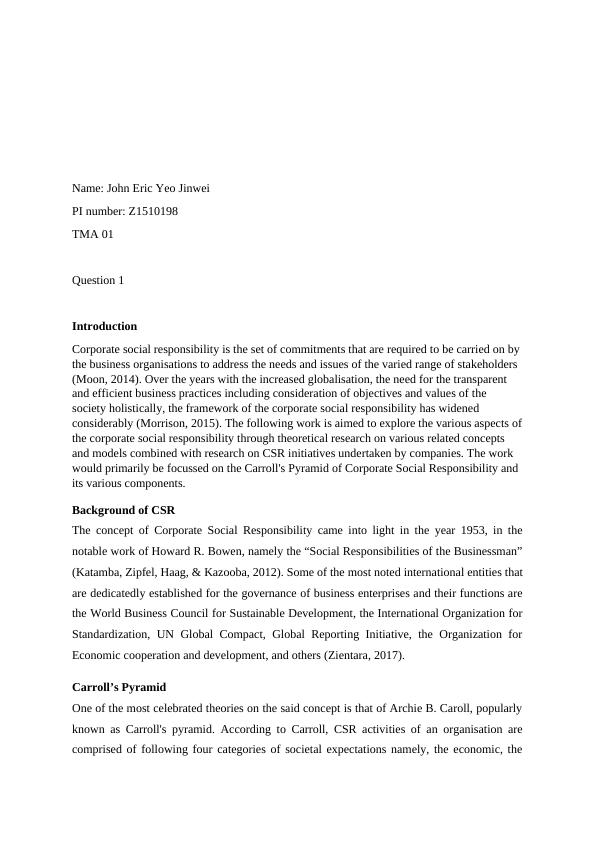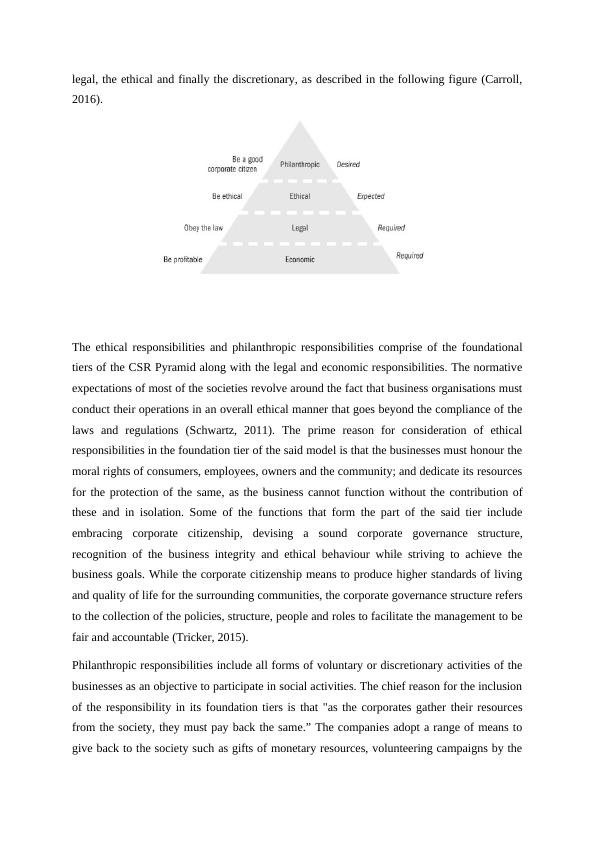Exploring the Various Aspects of Corporate Social Responsibility
This assignment aims to explore the various aspects of corporate social responsibility, focusing on Carroll's Pyramid of CSR and its components.
7 Pages2201 Words435 Views
Added on 2023-04-21
About This Document
This work aims to explore the various aspects of corporate social responsibility through theoretical research on related concepts and models, combined with research on CSR initiatives undertaken by companies. It focuses on Carroll's Pyramid of CSR and its components.
Exploring the Various Aspects of Corporate Social Responsibility
This assignment aims to explore the various aspects of corporate social responsibility, focusing on Carroll's Pyramid of CSR and its components.
Added on 2023-04-21
ShareRelated Documents
End of preview
Want to access all the pages? Upload your documents or become a member.
Corporate Social Responsibility: Exploring Carroll's Pyramid
|8
|2227
|240
G4S PLC Corporate Social Responsibility
|9
|2033
|29
Business and Ethics Assignment
|7
|1690
|345
Corporate Social Responsibilities of BHP Billiton Company
|10
|2438
|458
Corporate Ethics - Case Study
|9
|1920
|279
corporate social Responsibilities Assignment
|10
|2888
|50



